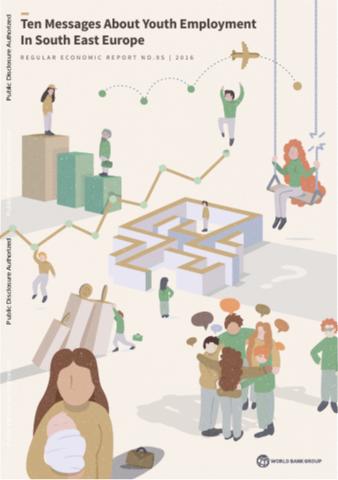Resource information
Today, nearly half of youth in the six South East European countries (SEE6) are not in the labor market, and one quarter is inactive—not in employment, education, or training. These poor outcomes partly reflect a difficult recovery in SEE6 from the 2008 global financial crisis, which sent already high youth unemployment soaring to new heights. This paper presents 10 evidence-based messages on the youth employment challenges in SEE6. The 10 messages demonstrate that many factors disproportionately affect jobless youth. Often young people bear the brunt of the structural and cyclical vulnerabilities that are embedded in the functioning of labor markets in the region. But the challenges faced by cyclically unemployed and structurally jobless young people in SEE6 differ, and so do the policy responses to address them. For the former, it is vital to keep youth engaged in the labor market during recessions and build their human capital while the labor market recovers. For the latter, the policy agenda is deeper; it is necessary to address the disincentives to work and hire youth embedded in exclusionary labor regulations and labor taxation; equip new labor entrants with the skills the market needs; and improve their access to productive inputs, such as land, finance, and professional connections. Policy measures to combat joblessness could often have much more importance for youth than other age groups. But the SEE6 policy agenda to address youth unemployment and inactivity is not an isolated agenda; it is an agenda for higher overall employment with specific elements for youth. Therefore, measures promoting overall job creation should be complemented, not replaced, by measures focused on youth.


